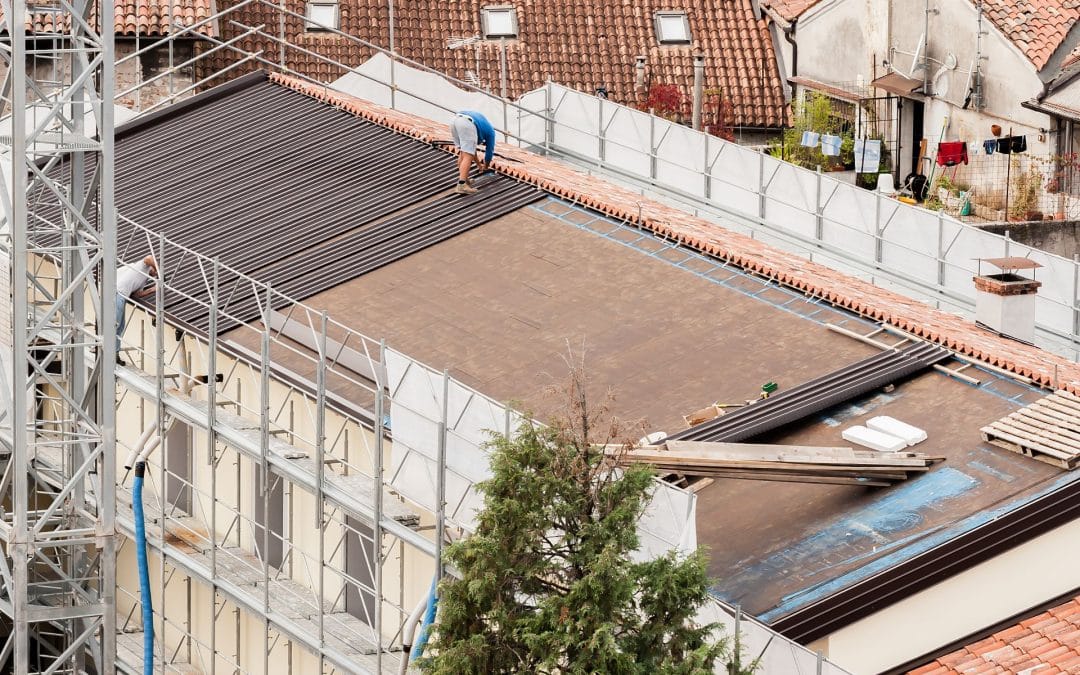As we face increasingly unpredictable weather patterns due to climate change, the choice of materials used in constructing and maintaining our buildings is more crucial than ever. One such material that stands out for its adaptability and resilience is PVC roofing. PVC, or polyvinyl chloride, is a type of plastic commonly used in building materials, and it offers exceptional benefits when used for roofing.
In this discussion, we explore why PVC roofing is rapidly becoming a preferred choice for commercial buildings looking to counter environmental challenges and maintain functionality in a changing climate. Not only is PVC roofing praised for its durability and cost-effectiveness, but it also plays a significant role in enhancing a building’s ability to conserve energy. By choosing PVC, property owners can enjoy long-term savings and contribute to broader environmental sustainability goals. Join us as we delve deeper into how PVC roofs are helping buildings stay strong and sustainable in the face of climate change.
Understanding PVC Roofing: Composition and Benefits
PVC roofing stands out in the construction industry thanks to its unique material composition and a range of significant benefits. The key component, polyvinyl chloride, is a versatile plastic known for its durability. It’s often reinforced with polyester or fiberglass, giving it a notable strength that can withstand various environmental pressures. This composition creates a roofing material that is not only long-lasting but also resistant to both water and fire, enhancing its suitability for a variety of building needs.
One of the main advantages of installing a PVC roof is its low maintenance requirement. Unlike other roofing materials that might need frequent repairs or replacement, PVC holds up incredibly well over time, significantly reducing upkeep costs. Additionally, PVC roofs are lightweight, so they don’t stress building structures unnecessarily. This lightweight nature, coupled with the ease of installation, makes them an economically smart choice for many of our commercial projects. Whether our clients are looking to upgrade older buildings or embark on new construction, we recommend considering PVC for its balance of performance, durability, and cost-efficiency.
Enhancing Energy Efficiency: How PVC Roofs Reduce Energy Costs
In today’s environmentally conscious times, energy efficiency is a paramount concern for any building, and PVC roofs play a crucial role in improving this aspect. Thanks to their inherent reflective properties, PVC roofing materials can effectively reflect sunlight and heat instead of absorbing them. This ability means that buildings stay cooler during the hot summer months, reducing the need for air conditioning and, consequently, lowering energy bills.
Beyond just reflecting sunlight, the thermal insulation properties of PVC roofs contribute further to energy conservation. By providing a solid barrier to heat transmission, these roofs ensure stable indoor temperatures, fostering a comfortable building environment requiring less heating and cooling energy. In locations with extreme temperature fluctuations, our team has observed that buildings with PVC roofing require significantly less energy to maintain comfortable conditions.
Moreover, energy efficiency not only cuts operational costs but also aligns with wider environmental goals by reducing the building’s carbon footprint. By incorporating PVC roofs into the design and construction of new buildings or choosing them for retrofitting projects, we help our clients make forward-thinking choices that benefit both their budgets and the planet.
Durability in Harsh Weather Conditions: PVC’s Resistance Capabilities
PVC roofs are uniquely suited to stand up to some of the toughest weather conditions nature can throw at a building. Their impressive resistance to environmental stresses is a key factor in their growing popularity in regions known for severe weather. Unlike traditional materials that may degrade, warp, or mold due to moisture and temperature swings, PVC roofing remains stable and intact. Its inherent flexibility enables it to withstand strong winds and sudden impacts from airborne debris during storms.
In areas prone to heavy rain, PVC’s water-resistant nature proves essential. The material helps prevent water infiltration, which can lead to serious issues like structural damage and mold growth in other roofing types. Moreover, the heat-welded seams of a PVC roof create a monolithic barrier that is virtually impervious to leaks, a common failure point in many roofs. This makes PVC not only a reliable choice for waterproofing but also reduces the risk and cost associated with water damage repairs over the life of the roof.
Adapting to Climate Change: PVC Roofs and Environmental Sustainability
As climate change continues to influence global weather patterns and elevate building standards, PVC roofing emerges as a proactive choice for sustainability. These roofs play a pivotal role in reducing a building’s environmental impact. Constructed from materials that are both recyclable and highly durable, they contribute to less frequent roofing replacements. This longevity reduces waste and the demand for raw materials, which, in turn, leads to a lower carbon footprint.
Furthermore, PVC roofs can be fully recycled at the end of their lifespan, preventing the accumulation of roofing waste in landfills. In our installations, we prioritize using PVC roofing for its practicality, resilience, and environmental benefits. By adopting PVC roofs, we offer our clients a way to make a significant positive impact on their environment. These roofs are not just about immediate benefits but are a step towards future-proofing properties against more stringent environmental regulations that may come with further advancements in climate change response strategies.
Conclusion
Choosing the right roofing material is more critical today than ever, as businesses and buildings aim to adapt to changing environmental conditions and enhance their sustainability practices. PVC roofing offers a comprehensive solution by providing durability, energy efficiency, and a lower environmental impact. At Mike Huddleston Roofing Systems, we are committed to offering roofing solutions that not only meet but exceed our client’s expectations in terms of performance and ecological impact.
If you’re considering a new roofing system that will prepare your building for the future, consider the many benefits of PVC roofing. Contact us today to discuss how we can tailor a PVC roofing system to suit your specific needs and contribute to a healthier planet.

